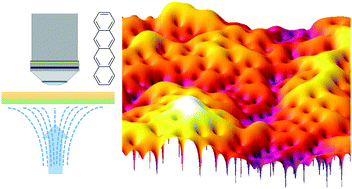Multi-scale modeling of early-stage morphology in solution-processed polycrystalline thin films†
Abstract
A model is introduced for treating early-stage nucleation, growth kinetics, and mesoscale domain structure in submonolayer polycrystalline films prepared by solution-phase processing methods such as spin casting, dip coating, liquid-based printing, and related techniques. The model combines a stochastic treatment of nucleation derived from classical nucleation theory with deterministic computation of the spatiotemporal dynamics of the monomer concentration landscape by numerical solution of the two-dimensional diffusion equation, treating nuclei as monomer sinks. Results are compared to experimental measurements of solution-processed submonolayer tetracene films prepared using a vapor–liquid–solid deposition technique. Excellent agreement is observed with most major kinetic and structural film characteristics, including the existence of distinct induction, nucleation, and growth regimes, the onset time for nucleation, the number of domains formed per unit area, and the micron- to millimeter-scale spacing statistics of those domains. The model also provides a detailed description the dynamically-evolving monomer concentration landscape during film formation as well as quantities derived from it, such as time- and position-dependent domain nucleation and growth rates.



 Please wait while we load your content...
Please wait while we load your content...
